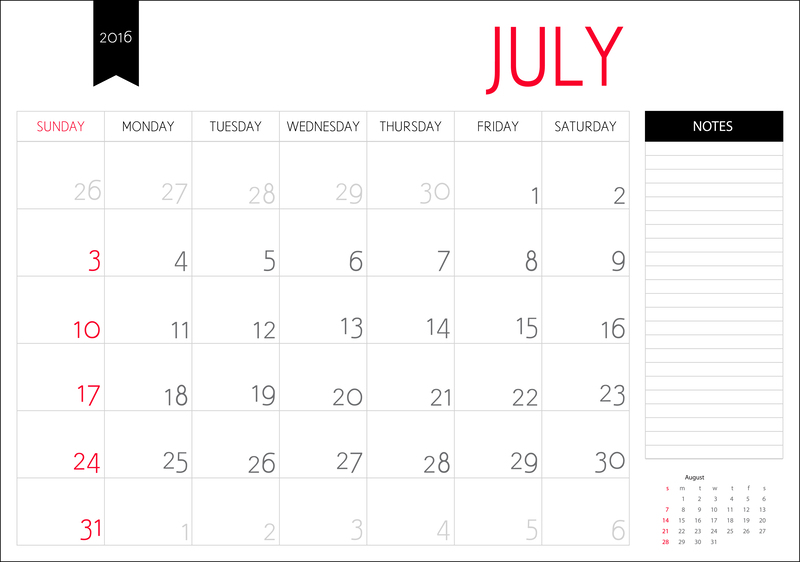Step-by-Step Guide to Transporting Your Bed and Mattress
Posted on 21/06/2025
Step-by-Step Guide to Transporting Your Bed and Mattress
Moving your bed and mattress might seem daunting, but with the right approach, you can protect your investment and ensure a seamless relocation process. Whether you're moving across town or across the country, knowing how to properly transport your bed frame and mattress can save you time, money, and frustration.
Why Properly Transporting Your Bed and Mattress Matters
Your bed and mattress are essential to a good night's sleep and healthy living. Incorrectly moving them can result in:
- Physical damage such as broken slats, scratched headboards, or a ripped mattress cover.
- Structural issues that compromise comfort and longevity.
- Health concerns like accumulated dust or exposure to mold if the mattress gets damp.
By following a step-by-step guide to transporting your bed and mattress, you minimize these risks and ensure your furniture arrives ready for restful nights.

Step 1: Gather Tools and Supplies
Before you start, assemble everything you'll need for safely moving your bed and mattress:
- Screwdriver or power drill (Phillips and flathead bits)
- Wrench or Allen keys (based on your bed's fasteners)
- Mattress bag or protective cover
- Furniture blankets or moving pads
- Plastic wrap and packing tape
- Zip-top bags for screws and small hardware
- Labels/markers to identify bed frame parts
- Moving straps or rope
- Hand truck or dolly
- Gloves for grip and protection
Pro Tip: Start by taking pictures of your assembled bed frame and mattress placement. This will help with reassembly at your new home.
Step 2: Disassemble Your Bed Frame
Moving a bed frame in one piece is rarely realistic or safe. Here's how to disassemble your bed frame for transport:
- Remove all bedding. Strip sheets, pillows, duvets, and mattress protectors and pack them separately in clean, sealable bags.
- Take out support slats and center rails. Carefully lift out slats or center supports, placing them together to avoid misplacement.
- Detach the headboard and footboard. Use the matching screwdriver or wrench to remove bolts or screws. Set aside all fasteners in a labeled bag.
- Disassemble main frame sections. For metal or wood frames, break down into easy-to-carry sections.
- Bundle and wrap components. Use plastic wrap, bubble wrap, or moving blankets to secure delicate parts, preventing scratches or dents.
- Label everything. Clearly mark which piece belongs to which part of the frame for swift reconstruction.
Safety Reminder:
Lift with your legs, not your back, and always ask for help with heavy or awkward items!
Step 3: Prepare Your Mattress for Moving
Mattress transportation requires extra care, as mattresses are bulky, heavy, and prone to dirt or water damage. Follow these mattress moving tips:
- Stand your mattress upright on its side. This prevents bending or folding, especially for innerspring and hybrid models.
- Encase your mattress in a protective bag or cover. Mattress bags guard against dust, moisture, and rips during the move.
- Tape the bag closed tightly and reinforce with plastic wrap. Seal all seams--especially if you're loading the mattress onto a truck or car roof.
- Use moving straps to make lifting easier. Handles and straps reduce the chance of dropping or dragging.
- Never fold or crease a spring mattress. Foam mattresses may allow some flexibility, but it's always best to follow the manufacturer's guidelines.
Step 4: Choose the Best Transport Method
Your transportation options for moving a bed and mattress will depend on your vehicle and distance. Here's a breakdown:
1. Moving Truck or Van
- Best for full bedroom sets and long distances. Lay frames flat along the floor of the truck, securing the mattress upright (against a wall) if space allows.
- Protect surfaces. Place moving blankets between pieces to prevent rubbing or damage.
- Secure with straps or ropes. Prevent shifting during transport by tying mattress and bed components to anchor points.
2. Personal Vehicle (Car, SUV, or Truck)
- Transport smaller beds, daybeds, or twin mattresses with seats folded down.
- Roof transport: Use heavy-duty straps to secure a mattress to the roof. Double-check legal requirements and drive slowly.
- Ensure nothing obscures visibility or violates local road safety laws.
3. Professional Movers or Bed Transportation Services
- For luxury beds, king/queen size, or extra-long moves, professional movers are safest. They'll handle packaging, loading, and transport, reducing your risk of costly mistakes.
- Insurance is often included, offering peace of mind for high-value items.
Step 5: Load the Bed Frame and Mattress Safely
Proper loading techniques help prevent movement in transit, keeping everything intact.
- Place larger parts (headboard, footboard) flat or upright along the truck walls.
- Lay boxed or wrapped slats and rails together.
- Secure the mattress upright, preferably with tie-down straps, against a side wall to save space and avoid warping.
- Use moving blankets or padding between stacked items.
- Prevent shifting. Test by gently rocking items--adjust as needed until nothing moves.
Step 6: Transport and Unload Your Bed and Mattress
On the road, drive slowly, especially if your load includes a large mattress or heavy bed frame parts. Sudden stops or sharp turns can cause items to shift or topple.
- Upon arrival, carefully unload in reverse order. Unstrap your mattress and frame pieces, carrying them to your new bedroom.
- Inspect for damage. Check for any rips, dents, or broken hardware.
- Allow the mattress to air out. If wrapped, unzip outdoors for a few hours to prevent odors or moisture buildup.
Don't forget: Keep all hardware and labeled parts together for quick reassembly!
Step 7: Reassemble Your Bed Frame and Mattress
Set up your bed in your new space by following the manufacturer's assembly instructions, or reverse your disassembly steps.
- Lay out all bed frame parts and hardware.
- Begin with the main frame, securing side rails to the headboard and footboard.
- Add slats or center supports. Double-check stability and tightness of each connection.
- Place the mattress on top. Adjust for even spacing and support.
- Remake your bed with clean, fresh linens.
If you photographed your bed before disassembling, use these images for verification. For specialized beds (adjustable bases or canopy frames), consult the manufacturer's website for diagrams or help.
Tips for Smooth and Safe Bed and Mattress Transportation
- Plan ahead. Don't leave packing and moving your bed until moving day itself--disassemble the night before, if practical.
- Avoid moisture. Never transport mattresses in the rain unless completely weatherproofed.
- Use the right mattress bag. Heavy-duty polyethylene bags are best for long-distance or storage moves.
- Ask for help. Beds and mattresses are heavy and unwieldy--work with a partner to avoid injury.
- Beware of bed bugs. If you're concerned, treat your mattress and frame before packing, and inspect carefully at your new location.
How to Store a Bed and Mattress After Moving
Sometimes, you may not be able to set up your bed immediately after moving. Here's how to store a bed and mattress safely:
- Keep in a climate-controlled storage unit to prevent moisture, mildew, and pests.
- Store mattresses vertically (on the long side) to save space, but avoid placing heavy items on top.
- Never store a mattress directly on the ground. Use wooden pallets or shelving to keep air circulating.
- Wrap metal or wood frame parts in blankets or bubble wrap for protection.
When ready to use, unwrap, clean, and air out all parts before reassembling. This ensures your bed and mattress remain fresh, clean, and durable.

Frequently Asked Questions about Transporting Beds and Mattresses
-
Q: Can I transport a mattress on the roof of my car?
A: Yes, but only if properly secured with heavy-duty straps and it does not obstruct your vision. Always drive carefully and check local laws before doing so. -
Q: How do I move a bed and mattress by myself?
A: Disassemble the bed fully and use a dolly for the mattress. However, for larger beds, getting assistance is highly recommended. -
Q: Is it safe to bend a foam mattress?
A: Some foam mattresses can be slightly bent for short periods. Never bend spring mattresses, and always check with the manufacturer first. -
Q: How much does it cost to transport a bed and mattress?
A: Local moves may be free if using your own vehicle; professional movers can charge anywhere from $100 to $600 depending on distance and bed size. -
Q: Can I leave my mattress in storage for months?
A: Yes, with proper wrapping and in a dry, climate-controlled environment. Air out before use.
Conclusion: Move Your Bed and Mattress Like a Pro
Successfully transporting a bed and mattress is achievable with careful planning, proper dismantling, and the right protective materials. Whether you're hiring movers or doing it yourself, ensuring your sleeping setup arrives undamaged is crucial for comfort and peace of mind in your new home.
Remember, the key to a smooth mattress and bed moving experience lies in organization, safety, and protection. By following this step-by-step guide to transporting your bed and mattress, you'll avoid costly mistakes and enjoy restful nights in your new residence without worry.
Ready to move? Gather your supplies, follow our tips, and sleep easy knowing your bed and mattress are in good hands!
Recommended Reading:



